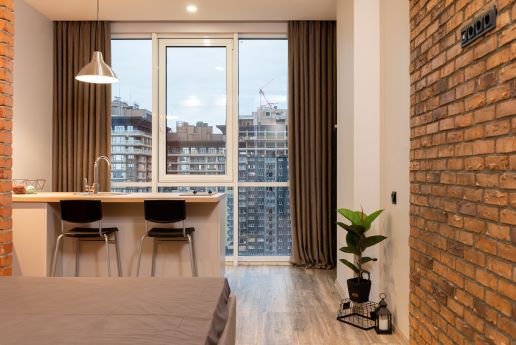
Opening a window for ‘fresh air’ does not stop air pollution
27 June 2023
Opening a window for ‘fresh air’ does not stop air pollution in your home or office, which is a common misconception believed by many. The perception of fresh air, that opening a window allows fresh air from outside to enter the indoor space, which in turn gives the feeling of improved air quality. It is true that opening a window can help to dilute indoor pollutants and provide a sense of freshness and ventilation, but we must not rely on it to clean the air.
So why do people believe that opening a window is good for indoor air quality?
- There is a lack of awareness: Some individuals may not be fully aware of the sources and nature of air pollution. They might assume that opening a window will automatically solve the problem without considering the specific pollutants present or their concentration levels.
- Limited understanding of filtration: There might be a misconception that opening a window will naturally filter out all pollutants. While opening a window can provide some ventilation, it does not necessarily filter out fine particles or gaseous pollutants effectively. Additional filtration measures such as using air purifiers or having well-designed HVAC systems are required for efficient removal of pollutants.
- Overestimation of outdoor air quality: People may assume that the outdoor air is cleaner or healthier compared to indoor air. While this can be true in certain situations, it depends on various factors such as proximity to pollution sources, weather conditions, and the specific pollutants present. In some cases, the outdoor air can be more polluted than indoor air, especially in urban areas with high levels of traffic or industrial emissions. You can check the air quality in your area here, simply put in your postcode.
- Outdated government advice: In the past, governments and authorities sometimes provided outdated or inadequate advice regarding air pollution. Some would say to “stay indoors during smoggy days”, when air pollution was associated with visible smog and industrial emissions. This did not take into consideration the long-term effects of exposure to air pollution or the impact on indoor air quality.
“Wear masks only during extreme pollution events”: In the past, authorities suggested wearing masks or face coverings only during severe pollution episodes. However, the long-term exposure to lower levels of air pollution can also have detrimental health effects. Consequently, this advice failed to address the importance of protecting oneself from chronic exposure to pollutants.
“Planting more trees will solve air pollution”: While trees can help mitigate air pollution by absorbing some pollutants and producing oxygen, this advice alone oversimplified the issue. Air pollution is a complex problem influenced by various factors such as emissions from vehicles, industries, and other sources. Relying solely on tree planting without addressing the root causes of pollution is an insufficient approach.
What is the source of air pollution in the home or office?
There are several sources that can contribute to air pollution within a home or office. Here are some common sources of indoor air pollution:
- Combustion appliances: Appliances that burn fuels such as gas, oil, coal, or wood can release pollutants like carbon monoxide, nitrogen dioxide, and particulate matter. Examples include gas stoves, fireplaces, and wood-burning stoves.
- Tobacco smoke: Smoking cigarettes or cigars indoors releases a wide range of harmful chemicals and particulate matter, leading to poor indoor air quality.
- Building materials and furnishings: Certain building materials, furniture, and carpets can emit volatile organic compounds (VOCs), which are harmful chemicals that contribute to indoor air pollution. These chemicals may be present in paints, varnishes, adhesives, and synthetic materials used in carpets and furniture.
- Household cleaning products: Many conventional cleaning products contain chemicals that can release harmful fumes and VOCs when used, affecting indoor air quality. Examples include aerosol sprays, bleach, and certain disinfectants.
- Mold and moisture: Moisture problems, such as leaks or high humidity, can lead to the growth of mold and mildew. These can release spores and other allergens into the air, causing respiratory issues and poor indoor air quality.
- Radon: Radon is a naturally occurring radioactive gas that can seep into homes through cracks in the foundation or gaps in the walls. It is a leading cause of lung cancer and can be found in varying levels in different regions.
- Pesticides: Indoor use of certain pesticides or insecticides can release toxic chemicals into the air. These products are commonly used for pest control in homes.
- Ozone: Commonly known as what protects us from the sun’s radiation, ozone is harmful when found in the troposphere (ground level). If it within the indoor environment, it can cause major health problems including breathing difficulties, airway inflammation, and aggravate chronic respiratory diseases. Some common household items such as printers or certain air purifiers create ozone as a byproduct or intentionally.
What are some steps to reducing indoor air pollution?
Whilst opening a window can help with ventilation it does not filter or clean the air inside. Here are some steps you can take to minimise indoor air pollution:
- Keep your home clean: Regularly clean your floors, carpets, and furniture to remove dust, pet dander, and other pollutants that settle on surfaces. Use a vacuum cleaner with a HEPA (High-Efficiency Particulate Air) filter to trap fine particles effectively.
- Control humidity: Excessive moisture can promote the growth of mold and mildew, which can release spores and contribute to poor indoor air quality. Use dehumidifiers in damp areas, and fix any leaks promptly to prevent moisture buildup.
- Ventilate properly: Ensure proper ventilation in your home to improve air circulation and reduce the concentration of pollutants. Open windows when weather conditions permit and use exhaust fans in kitchens and bathrooms to remove odours, moisture, and cooking fumes.
- Avoid smoking indoors: Smoking indoors is a significant source of indoor air pollution. Encourage smokers to smoke outside the house or provide a designated outdoor area away from windows and doors.
- Use natural cleaning products: Many household cleaning products contain harsh chemicals that release volatile organic compounds (VOCs). Opt for natural and eco-friendly cleaning products or make your own using ingredients like vinegar, baking soda, and lemon juice.
- Keep indoor plants: Certain plants, such as spider plants, peace lilies, and snake plants, can help filter indoor air by absorbing pollutants like formaldehyde and benzene. Place these plants strategically around your home to improve air quality.
- Minimise the use of chemical-based products: Reduce the use of air fresheners, aerosol sprays, and other products that release harmful chemicals into the air. Choose fragrance-free or low-VOC alternatives whenever possible.
- Avoid using open fires or unvented appliances: Burning wood or using unvented gas or kerosene heaters can release pollutants into the air. If you use a fireplace, ensure proper ventilation, and have it regularly inspected and cleaned.
- Test for radon: Radon is a naturally occurring radioactive gas that can seep into homes and pose serious health risks. Consider conducting a radon test to determine if it’s present in your home. If elevated levels are found, contact a professional to mitigate the issue.
- Maintain HVAC systems: Regularly clean and maintain your heating, ventilation, and air conditioning (HVAC) systems. Change filters as recommended by the manufacturer to ensure efficient operation and reduce the circulation of pollutants.
- Use an air purifier indoors: The unique DNO technology within the range kills pollutants in the air and can convert harmful ozone to oxygen.
Remember, while these steps can help improve indoor air quality, it’s essential to address outdoor pollution sources as well. Monitoring air quality and taking steps to reduce pollution from nearby roads, factories, or construction sites can also contribute to a cleaner living environment.
Latest News

Oxford based air purification experts Healthy Air Technology Ltd recognised at CIBSE Building Performance Awards
News release: Oxford based air purification experts Healthy Air Technology Ltd recognised at CIBSE Building Performance Awards The…

Cloud seeding and air pollution
Recent poor air quality in regions such as Pakistan, China and the UAE has led to the use…

Are scented candles dangerous to indoor air quality?
Recent news articles questioning if scented candles are dangerous to indoor air quality have helped to highlight the…

